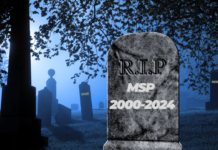“They’re fine to use. Just be sensible about the volume and amount of time you listen,” said Christine Albertus, audiologist at Marshfield Clinic, Marshfield, Wisconsin. “If the person next to you can hear your music, it’s too loud.” Albertus recommends using an iPod for a maximum of two hours a day.
When Baby Boomers cranked up stereos, music dissipated from speakers across the room. When portable Walkman stereos were introduced, music was much closer to ears, but some sound leaked from muff-style headphones. With the advent of in-the-ear headphones, music is pumped directly into the ear canal, Albertus said. “We’re moving sound closer and closer. It’s really increasing pressure on the ear.”
Hearing damage accumulates with exposure. Continuous listening, even at reasonable levels, can damage delicate hair cells in the inner ear. “In most young people some damage is already there, but it doesn’t directly affect their ability to communicate with friends or family,” she said. “Fast forward, and they may be hearing aid candidates by the time they’re in their early 40s.”
The journal Pediatrics recently estimated that 12.5 percent of children ages 6 to 19 have noise-induced hearing loss. Occupational Safety & Health Administration guidelines say volume exceeding 80 decibels for up to eight hours can cause hearing loss. A typical lawn mower produces 80 to 85 decibels. “If the volume is up to over 100 decibels, even one and a half or two hours of use can cause damage,” Albertus said.
People of all ages should practice hearing conservation, Albertus said. She encourages protecting ears from noise generated by lawn mowers, chain saws, power tools, guns, recreational vehicles and concerts. Foam earplugs are an effective, inexpensive way to protect hearing, she said. Noise- reducing earmuffs and custom-made ear protection are other options.
“Realize what causes hearing loss and use common sense. If you’re exposed to loud sounds, use ear protection,” Albertus added.
The Marshfield Clinic system consists of 41 patient care and research and education facilities in northern, central and western Wisconsin, making it one of the largest integrated medical systems in the United States.












